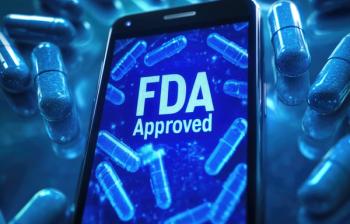
New Treatment Classes for Type 2 Diabetes
Peter Salgo, MD: Let’s talk about some of these new drugs. There are new treatment classes for type 2. We’ve got, what, the GLP-1s [glucagon-like peptide-1 receptor agonists] and the DPP-4s [dipeptidyl-peptidase-4 inhibitors]. Why don’t you start us off on that: what are these drugs?
Om P. Ganda, MD: I think they are—starting in 2006, let’s say, [about] 12 years now, we had the launch of these new drugs. The first 1 to come out was an incretin agent called DPP-4, dipeptidyl-peptidase-4, which basically works by stopping the degradation of GLP-1 so that it can last longer in the circulation—just the mechanism. The second 1 was the GLP-1 receptor agonist stem cell, which is like an older brother of DPP-4. It reaches a higher concentration of GLP-1 in the circulation [and] had a little greater effect on improving glucose control.
And the third 1 is the SGLT2 [sodium-glucose cotransporter 2], which you alluded to before. And the reason we’re so excited about these drugs [is] that now we have clinical trials that have shown that they benefit by improving glucose control, causing some weight loss, [and have a] low risk of hypoglycemia by themselves, unless you combine it with insulin or with sulfonylurea. But in addition, they seemed to have particularly very exciting cardiovascular advantages that no one ever [dreamed] of. So now so-called sugar drugs are becoming drugs that cardiologists love to use along with us.
Peter Salgo, MD: But again, it goes down to diabetes being multifactorial.
Om P. Ganda, MD: It’s not really, but yeah.
Peter Salgo, MD: It has effects on all sorts of organs, not just sugar. So is it really surprising that diabetes drugs that work for diabetes also are good for your heart?
Om P. Ganda, MD: In a way it is, because we didn’t think that they would have so much of the benefit that we see now in [the] cardiovascular system, and even in the kidney. But now are beginning to kind of put 2 and 2 together [and see] how the mechanism of these drugs could have not only glycemic effects but could have additional cardiovascular effects.
Peter Salgo, MD: OK.
Om P. Ganda, MD: So that’s exciting part.
Peter Salgo, MD: Let’s get some basic science for a minute. Talk about “encretin” or incretin, depending on how you want to pronounce it. What about the [physiological] effects of incretin hormones on beta cell function, because these drugs are interacting with that, right?
Helena W. Rodbard, MD: Well, in very simplistic terms, what incretins do is they increase insulin secretion from the beta cells of the pancreas, and at the same time they decrease the glucagon secretion from the alpha cells of the pancreas, because paradoxically what happens in people with diabetes, not only don’t they have enough insulin coming out from the beta cell, but they have too much glucagon coming out in the alpha cells that’s further going to contribute to increase the blood glucose level. So that’s just a simplistic explanation of what they do, but they have other effects as well. They work at the level of the adipose tissue. They work at the level of the muscle, and even at the level of the brain decreasing just changing some of the neurotransmitters, and especially the GLP-1 receptor agonist. They have a satiety effect. That’s how people lose weight.
Peter Salgo, MD: How come I didn’t have that incretin 20, 30 years ago.
Helena W. Rodbard, MD: Well, actually, they were around, but they had not been commercialized yet. So we knew about the concept.
Peter Salgo, MD: I didn’t even hear about these things as kind of a global factor in diabetes until recently, right?
Om P. Ganda, MD: Yeah. Think about SGLT2 inhibitor. Here’s a drug that was known 40 years ago. When I was a fellow, I was using a drug called [5]-fluorouracil. We injected it into the tail of the rat, and it lowered blood sugar. Of course, it was just toxic, so nobody pursued it. But now we’ve gone back and rediscovered these drugs called SGLT2 inhibitors, and they have unique effects.
Peter Salgo, MD: OK, let’s talk about that. We have SGLT2 inhibitor. What is the mechanism of action. Just spell it out.
Om P. Ganda, MD: Very simple. These drugs have a unique property, unlike any other diabetes drug, that they make your kidney not reabsorb the sugar that you filter every day. Every day we’re filtering, like, 100 L of fluid through the kidney, and all the glucose is reabsorbed 99.9%. These drugs make the kidney not reabsorb the glucose, so it all gets dumped out in the urine. And so by definition, it should be affecting any kind of diabetes, anybody who’s got high blood sugar—type 1 or type 2. Of course, they’re not approved for type 1, except the European [Medicines] Agency just approved for type 1 diabetes. And we’re working on some of the other drugs in the class, Helena included, [in which] we’re looking at these drugs...for treatment, even in people with type 1 diabetes. But we won’t go there, because it’s not FDA approved.
Peter Salgo, MD: OK. Now, that’s the SGLT-2 inhibitors. Now we’ve got, and I really want to get this out clearly, we’ve got GLP-1 receptor agonists and DPP-4 inhibitors. What is the difference? What’s their mechanism of action? How do they work?
Helena W. Rodbard, MD: The mechanism of action is similar except, as Om said, the GLP-1 receptor agonists are more potent in beyond just increasing insulin secretion and decreasing glucagon secretion. They also have some effects in the periphery. But there is a major difference as far as prescribing. DPP-4 inhibitors are oral; GLP-1 receptor agonists are injectable. Until now, when we may actually start having semaglutide in the oral form. Semaglutide is a GLP-1 receptor agonist initially developed as an injectable. But right now there is pending approval by the FDA. A number of clinical trials have shown oral semaglutide to be very successful. So that’s going to be a game changer for people [who] are afraid of injections.
Peter Salgo, MD: OK. Now, let’s talk about the efficacy in controlling postprandial and fasting blood sugars of each of these classes of drugs. Are they different? Is 1 preferred?
Helena W. Rodbard, MD: It’s more than just a class. It’s actually the drugs per se. For instance, lixisenatide is a GLP-1 receptor agonist that has an effect mostly postprandial. Whereas some of the others have more of an effect on the fasting, and that is true for semaglutide, which is a once-a-week injection. So life has become much easier. People don’t need to inject themselves every day with GLP-1 receptor agonists. They have a once-a-week formulation as well. And they have liraglutide, [which] is a daily injection. There are other once-weekly injections—exenatide is 1 of them. Dulaglutide is another 1, also [a] once-weekly injection. All of those are GLP-1 receptor agonists.
Peter Salgo, MD: Are there specific patient factors you consider specifically for DPP-4s?
Helena W. Rodbard, MD: Well, DPP-4 inhibitor is a very easy drug to use. First of all, they’re oral. It’s a pill a day. It’s very easy. It’s safe. They’ve been around for a long time. And patients [who] have a relatively early onset of diabetes—let’s say they’re on metformin—they are not on the optimal control. [So] adding a DPP-4 inhibitor is almost a no-brainer. It’s very easy.
Peter Salgo, MD: Do you have any specific patients [who] you think are great for DPP-4s, any criteria?
Om P. Ganda, MD: I agree with Helena that I think they are very safe drugs. They have minimal [adverse] effects, and the combination of metformin and DPP-4 is a marriage made in heaven. We often use it in people who require some postprandial glucose reduction, and they don’t have underlying cardiovascular disease. And even the combination of these 2 drugs, we think that by prolonging the period of better glucose control, we do reduce the risk of cardiovascular complications in the end. Particularly in patients in [the] older age group with comorbid conditions, this combination works very well without any risk of hypoglycemia and without any risk of major [adverse] effects.
Newsletter
Stay ahead of policy, cost, and value—subscribe to AJMC for expert insights at the intersection of clinical care and health economics.








